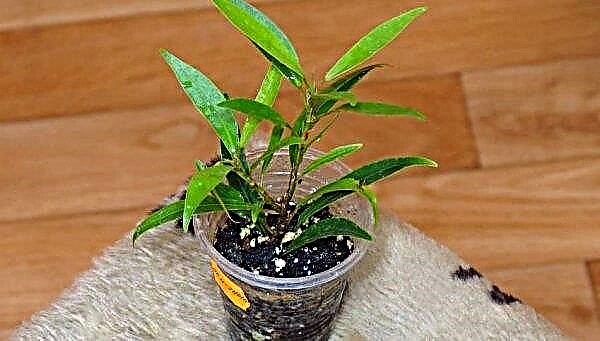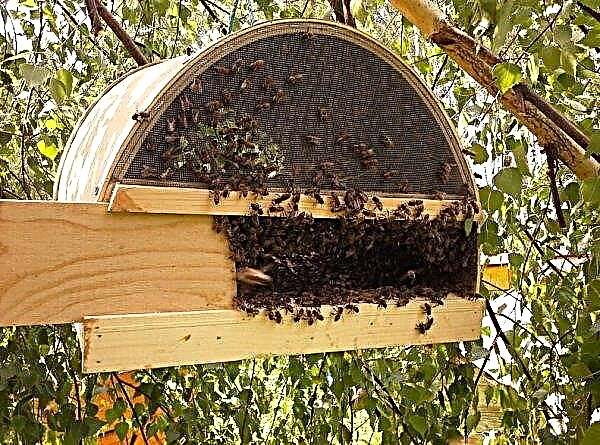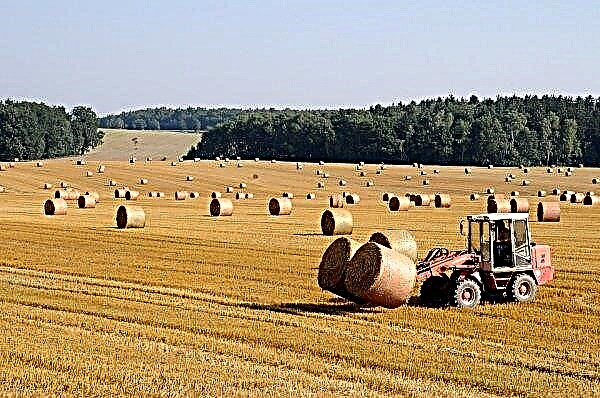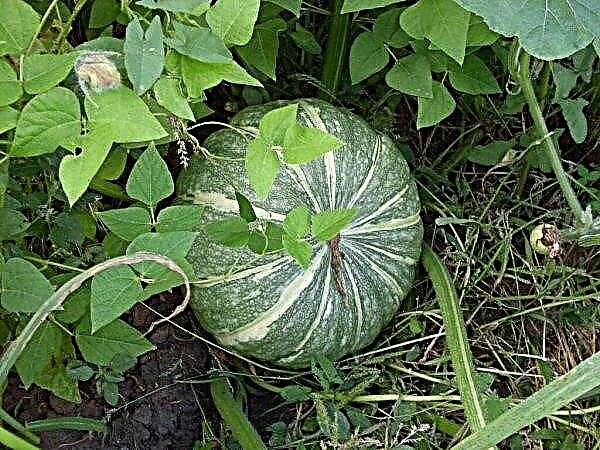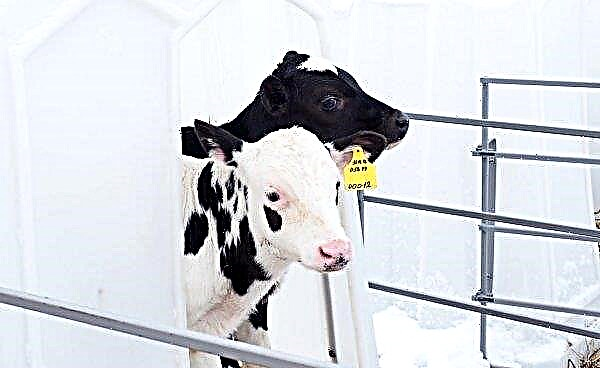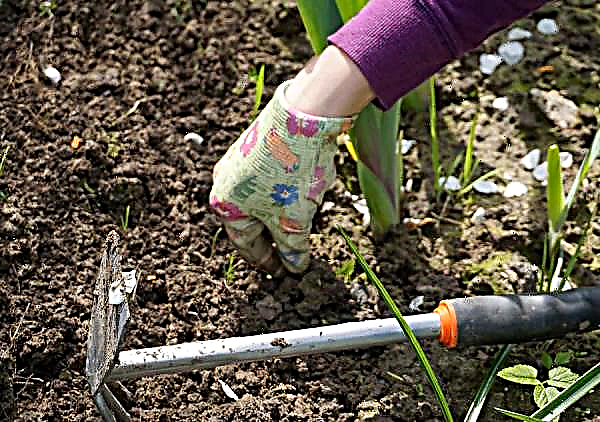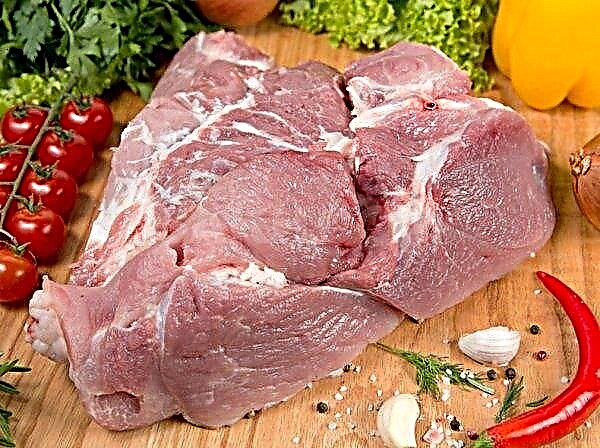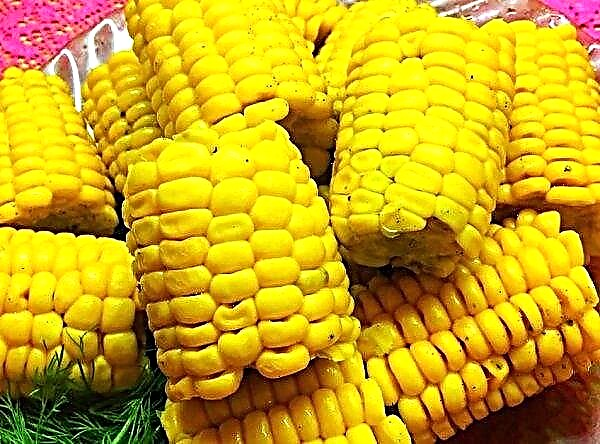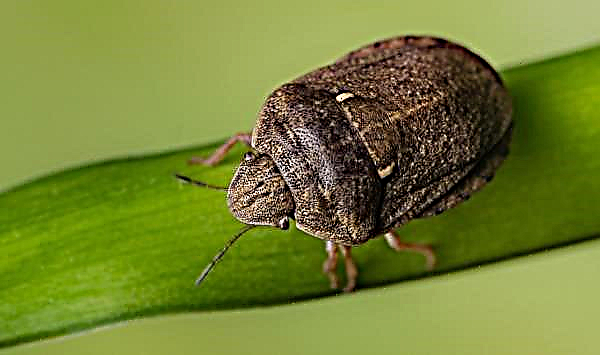Recently, quail has become one of the most popular birds for rearing at home. They are bred to obtain valuable, delicious, nutritious, delicious meat and eggs. But in order to keep the birds high egg laying, they need to organize good living conditions. To do this, you need spacious cells that can be purchased at special stores or run yourself. How to do this, let's take a look.
Requirements for the cellular content of quail
Arrangement of a comfortable life for quail begins, first of all, with the creation of a special dwelling - a cage, because it is the cellular content that is considered the most effective way to achieve high productivity, egg laying of birds and good quality meat. It should be noted that a number of requirements are put forward to the cages and the room where they will be located, regarding their size, lighting, internal furnishings, etc. Let's see what the design for the quail housing should be.
Dimensions
Cell sizes for the herd of parents should be designed based on the number of goals that will be contained in them:
- for the number of adult birds up to 10 individuals, the minimum dimensions are considered - 300x750 mm;
- for 30 individuals - 450x1500 mm;
- for 50 individuals - 750x1500 mm.
- for 10 goals - 250x600 mm;
- for 30 individuals - 350x1200 mm;
- for 50 individuals - 600x1200 mm.
Moreover, closer or, conversely, spacious conditions can lead to the fact that birds will begin to lose weight and reduce egg laying. The most optimal height of the device is 25 cm. This makes it possible to install cells in a couple of rows, depending on the height of the ceiling in the room.
Important! The lowest tier of cells should be located above the floor at least 30 cm.
Lighting
In the room where quail structures will be located, it is necessary to provide an 18-hour light regime. To do this, it is recommended to use artificial light with diffused light. It is also good to complement lighting devices with the function of automatically adjusting the intensity of the light flux. It is strictly forbidden to use lamps with very intense, blinding light.
Temperature and humidity
Home-made quails should be kept in a warm, dry and well-ventilated area, where there are no drafts and no direct sunlight. The optimum temperature is considered to be +18 ... + 23 ° С.
In the middle of the room it should be dry, the permissible humidity level is 60–75%. It is also very important to organize supply and exhaust ventilation, which will not allow air to stagnate. It is not recommended to install structures with birds in buildings that are located close to ponds, rivers or lakes. In addition, the premises chosen for the maintenance of pets should:
In addition, the premises chosen for the maintenance of pets should:
- located far from the carriageway, busy places and other sources of noise. Birds that are designed for oviposition are very sensitive to various sounds, shy, poorly carried in noisy conditions;
- stay away from various external stimuli - bright light, wind, etc. Such factors have a detrimental effect on quail, up to a decrease in the intensity of oviposition or its complete cessation.
Design options for birds of different ages
All quail cell models can be divided into two main types: cells that are distinguished by their design, and cells that have certain functional properties. Herd productivity and quality characteristics of meat products will directly depend on how the cell is arranged.
Did you know? Quail and their eggs are not affected by a disease such as salmonellosis. That is why eggs can be stored for a long time at room temperature and not be afraid that they will deteriorate.
By design features distinguish:
In addition, all cells can be classified according to their functional purpose:Regardless of the purpose or design qualities, all cells are equipped with drinking bowls, feeders of various shapes. Under each tier of the product a pallet is installed, which is needed to collect various waste.How to make do-it-yourself quail cages at home
Making homemade quail devices is quite simple, if you follow the previously developed step-by-step instructions. To build products for housing, you can use wood, plastic, plasterboard profile, as well as other materials that are found in the household.
Important! Each piece of wood must be treated with an antiseptic that protects the wood from moisture, rot, fungi, thereby ensuring a long service life.
From wood
One of the safest bird cages is considered to be a construction made of wooden blocks. It:
- easy to assemble;
- does not require large cash and time costs;
- excellent processability;
- does not harm the health of the bird.
- wooden bars, section 40x40 mm;
- a grid with medium-sized cells;
- screws, nails;
- construction stapler.
- Cut the workpieces from the bars: 4 parts 90 cm long, 4 parts 70 cm each and 4 parts 60 cm each.
- Assemble the frame: fasten the rear and front workpieces to the posts at a distance of 70 cm and the side workpieces at a distance of 60 cm. In this case, the lower boundary of the fastening should be at a height of 20 cm from the floor.
- Tighten the frame with a net: cut from the net webs, the sizes of which correspond to the sizes of the side, front, back, upper and lower parts of the frame. Fasten the mesh to the structure with nails, screws, staples. The mesh should be attached to the bottom of the product under a slight slope so that the eggs can slide into the egg collector.
- On the front side, install a door pre-made from small wooden blocks and fitted with a net. Secure it with hooks or awnings.
- Mount pallets under the cage using galvanized sheets.
- Equip the product with drinking bowls and feeders.
Video: how to make a village quail cage
Frameless cage
As practice shows, frame cells are more reliable and practical, however, many breeders prefer frameless options, since they have their own key advantages:
- simplicity and fast pace of manufacture;
- mobility of the installation;
- ease of installation;
- cheap manufacturing.
- galvanized wire mesh 90 cm wide and mesh size 25x25 mm;
- galvanized mesh with small cells to create the bottom of the structure;
- metal wire;
- welding tool;
- Bulgarian;
- clipper with brackets;
- backups.
The step-by-step construction of a home construction includes the following stages:
- Cut protruding pieces of wire along the edges of the mesh.
- Cut the grid into two rectangles measuring 90x42.5 cm, which will be needed to form the lower part and the ceiling.
- Make one rectangular blank with dimensions of 90x27.5 cm, which will serve as the back wall.
- Cut another workpiece measuring 90x27.5 cm and divide it in half. These will be the “sides” of the design.
- Make a rectangular blank of size 90x15 cm, which will act as the front wall. In it, cut a few holes through which the bird will be fed.
- Cut the size of the feeding hole from the door net.
- From the mesh with small cells cut the bottom of the structure measuring 90x60 cm. From the wide side on the mesh, make a bend 2-3 cm high.
- To assemble the cage: using the clipper, attach the back wall to the bottom at the level of: 6 cells on the top, 5 mesh cells on the bottom, that is, the workpiece will be fixed approximately in the center. Fix the upper workpiece, which will serve as a roof, then attach the “sides”. Attach the bottom blank to the product from below, thus forming a “second” bottom on which waste trays will be installed. “Attach” the front part to the structure, fix the doors on it. To the protruding part of the leaf, which will serve as an egg collector, attach small sidewalls with a height of about 2 cm.
- Equip the cage with a pallet, feeders and drinking bowls.
Video: how to make a frameless quail cage
A similar design is suitable for living 30–35 goals.
Made of plastic
To carry out the cells, you can use ordinary plastic, or rather, PVC boxes. This option is considered the simplest, because in this case there is no need to calculate the dimensions, additionally build the frame, but you just need to carry out a small "upgrade". The advantages of plastic structures made from fruit crates are obvious:
- ease of installation and assembly;
- light weight;
- ease of cleaning materials;
- durability in operation;
- product strength.
- plastic boxes of different sizes - 3 pcs.;
- wire;
- knife for trimming plastic.
- Cut corners from the top of the drawers.
- Set a tall drawer on a small one, which will serve as a stand for waste. Install another low drawer on top of the structure, secure the product with wire.
- Top cover cut out.
- To expand the cells of the box so that the quail head can crawl into them during feeding.
- Attach feed and water attachments to the structure from the outside.
Video: how to make a quail cage from plastic
This option will be optimal for growing 20 individuals. For more goals, additional boxes will be required.
From profile for drywall
One of the simplest options for a home-made cell is considered to be a design from a profile for drywall. This option has the following advantages:
- environmental friendliness and safety of materials;
- low cost and availability;
- simplicity in execution;
- mobility, that is, the ability to move the product to any desired location.
Its dimensions will be:
- height - 200 cm;
- width - 100 cm;
- depth of compartments - 50 cm.
Recommended Reading

For its production should have:
- the profile with which the drywall is fixed - 13 bands;
- mesh netting with cells of different sizes;
- drywall profile with a cross section of 8 mm;
- wire;
- screws;
- scissors for metal;
- screwdriver;
- roulette.
The quail dwelling creation algorithm consists of the following steps:
- Assemble a structure of 13 strips of galvanized profile. Connect all parts with screws.
- Attach parallel crossbars from the profile to the assembled frame, and the upper crossbars are fixed exactly at an angle of 90 degrees, and the lower ones with a slope.
- The structure is “sheathed” with a grid: on the floors mount a grid with small cells, on the ceiling and walls - with larger ones. Secure the mesh with wire and screws.
- From a mesh with a more durable wire, make doors 100x15 in size, fix them to the ceiling of the product.
- From sheets of galvanized steel, make pallets corresponding to the dimensions of the structure, and slide them into each cell.
- To fix the finished drinkers from plastic bottles and feeders made from the same profile.
If you need a cage for 16 or 20 goals, then, accordingly, it can be done in only one tier. Also, houses for birds can be made from many improvised materials, for example, from plywood, an old cabinet.
Cell arrangement
Naturally, any quail cage, regardless of its design, should be equipped with additional details, such as drinking bowls, feeders, pallets.
Litter and cage tray
The presence of pallets in the quail cage is mandatory, because they allow you to collect waste, waste products of birds, thereby ensuring cleanliness in the home. As the material for the bottom stand, you can use thin metal, galvanized sheet, plastic, plywood.
However, the latter option is less desirable because it quickly deteriorates due to regular exposure to moisture. You can also purchase ready-made plastic or steel pallets. To maintain quail, experienced breeders use a deep litter, which is sawdust, peat, shavings, straw. The use of litter is especially important in the winter, when the paws of the birds remain unprotected.
To maintain quail, experienced breeders use a deep litter, which is sawdust, peat, shavings, straw. The use of litter is especially important in the winter, when the paws of the birds remain unprotected.
The use of bedding material is advantageous in that when it comes in contact with moisture or organic waste products, it begins to compost, thus creating an additional heat source.
Important! The litter should be changed regularly, otherwise particles of dirt and droppings will stick on the feet of the birds, thereby leading to the development of various ailments.
Feeding troughs and drinking bowls
Feeding troughs and drinking bowls for cages can be purchased ready-made in specialized stores or made independently. However, they all must meet certain requirements:
- do not have sharp corners that can injure the bird;
- the material of the products must be highly hygienic, safe and easy to clean;
- the volume of the feeder should be slightly larger than the volume of feed required for feeding;
- constructions should be quite powerful and provide free access to water and food for both quail and breeder.
 Since birds quite often overturn feeders and drinkers, it is recommended that they be firmly fixed on the cages at a level that will be most convenient for birds for free access to food. It is better to mount the product on the outside of the cage, however, if it is intended to install drinkers inside the structure, then they should be protected to ensure protection from ingress of litter and bedding material.
Since birds quite often overturn feeders and drinkers, it is recommended that they be firmly fixed on the cages at a level that will be most convenient for birds for free access to food. It is better to mount the product on the outside of the cage, however, if it is intended to install drinkers inside the structure, then they should be protected to ensure protection from ingress of litter and bedding material.Did you know? Quail eggs are superior to Viagra in their properties. Scientists have proven that they are one of the most potent stimulants of potency, therefore, regularly using quail eggs, you can increase and restore male strength.
The best options from the manufacturer
Of course, the easiest way to get a quail cage is to get it ready-made in specialized stores. Fortunately, today manufacturers offer a huge number of products, among which you can easily choose the best option, taking into account design features, purpose, cost.
AT TOP-5 of the most popular and sought after factory structures included:
- KPA-1 - multi-tiered, multi-sectional industrial construction on a steel frame, designed for professional breeding of birds. Its capacity is 1100 goals.The product is equipped with a drip trap, feeders with high sides, drinking bowls, a manure removal system, a tray, an egg collector;

- Poultry cage - collapsible, compact design used for rearing quails and raising chickens. Holds up to 27 goals. Made of durable galvanized wire mesh with 25x25 mm cells on the walls and 6x6 mm on the bottom.

- KP-10 - A convenient, practical, safe product made of a durable metal frame and galvanized sheets. It is designed for 10 goals, but it is possible to add several tiers. The main advantages of the design are: spaciousness, strength, durability in use, corrosion resistance. The cage is additionally equipped with nipple drinkers, feeders, an egg collector, a litter collection tray;

- KP-30 - a single-tier cage for 30 animals, equipped with nipple drinkers and mounted feeders. It features good roominess, compactness, ease of assembly, high quality and safety of materials, the ability to easily increase the number of tiers with an increase in livestock;

- KP-60 - A comfortable, two-tier galvanized steel structure designed to grow 60 individuals. The cage is supplemented with nipple drinkers and mounted feeders. The product is easy to use, easy to transport and install in any place, has a long service life;

- cell "Simple solution" - a modular, two-tier structure made of galvanized steel, which can accommodate up to 120 heads. It has the following advantages: it is easy to install, it is great for installation on small areas, it is quickly cleaned, supplemented with new modules.

Useful Tips
Quails that have reached the age of one month are considered broiler. When constructing a cage for them, one should adhere to some aspects:
- the walls of structures are made mesh or lattice;
- it is allowed to use a grid on the floor with large cells, since the birds are large and will not fall into the holes;
- broilers do not need to install a brooder;
- the best materials for the production of cells is wood or metal. The frame in this case is no longer required;
- low cages should be used in which the bird will move less, thereby gaining mass faster.
Did you know? In 1990, quail embryos were sent into space. It was these birds that became the first to be born in outer space.
Drawings of cages for different numbers of birds
In order to properly manufacture quail cages with one’s own hands, preliminary drawings are indispensable. The dimensions of the structures, first of all, will be determined by the number of birds that will be kept in them. For those who first encountered the task of building cages, structural designs for 5, 10, 20 and 50 goals are offered.
The simplest is the design for 5 goals. Her drawing is as follows:

Typically, the size of the dwelling for 10 heads is: 30x75 or 25x60, depending on the purpose of growing quail - laying hens or birds for fattening.
The design diagram has the following form:

Where:
- frame;
- drinking bowl;
- Door;
- feeding trough;
- egg tray;
- floor;
- litter tank.
Despite the fact that modern manufacturers offer consumers a huge variety of designs for keeping poultry, homemade quail cages are incredibly in great demand and popularity.
And this is not surprising, because with minimal financial costs and time, you can make a simple, safe and practical design for an individual project that can last more than a dozen years and grow more than one generation of poultry.







